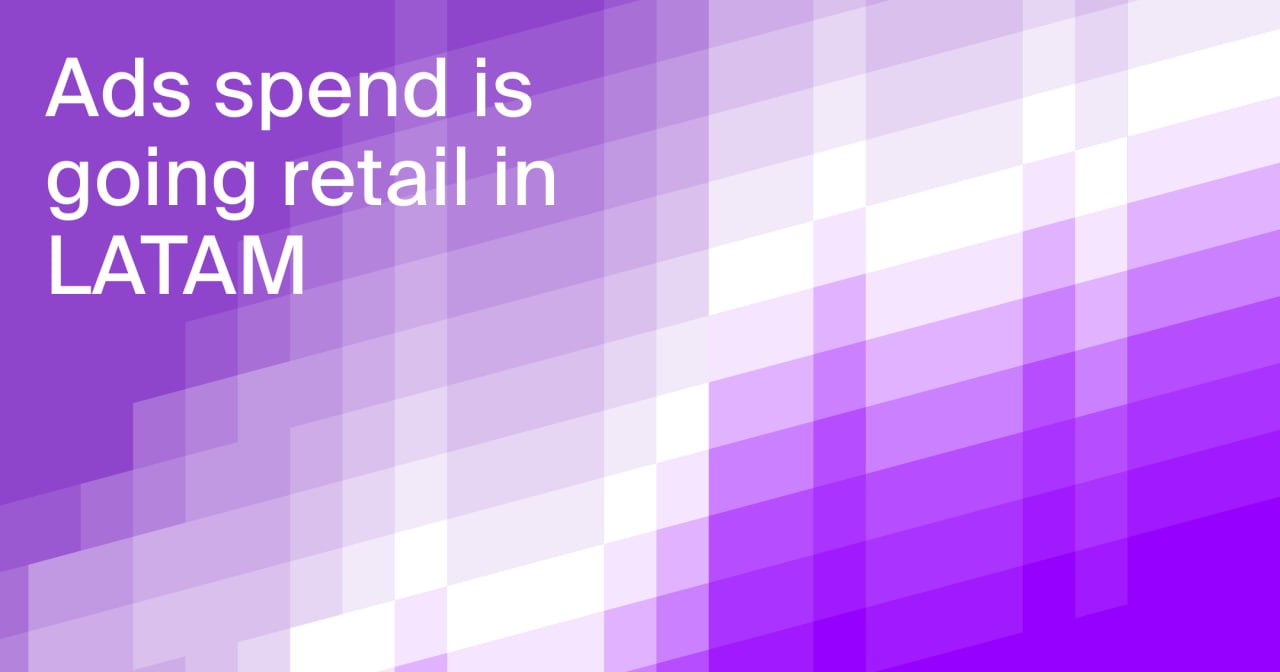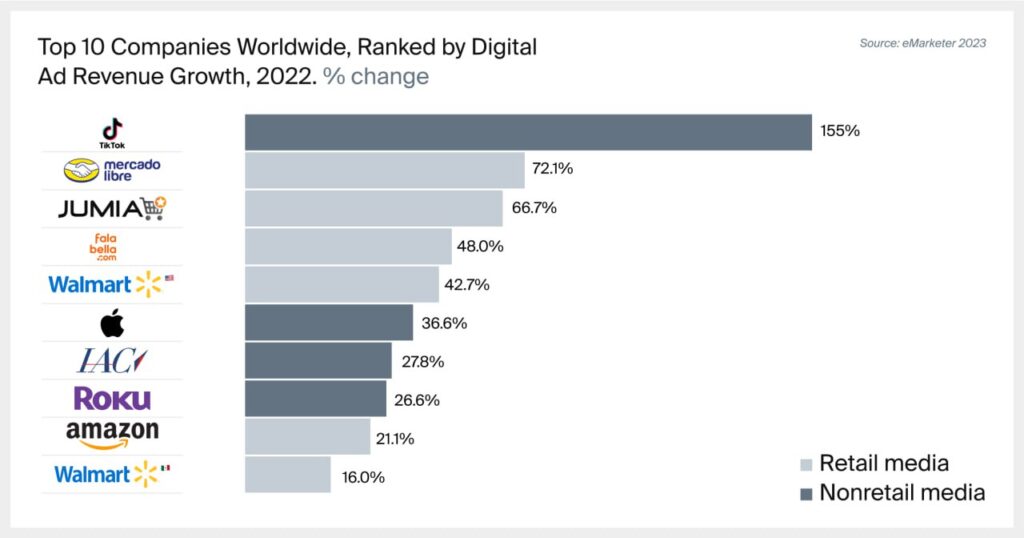
Latin America’s $1 billion USD retail media market offers some of the world’s highest returns on ad spending. As economic conditions worsen, marketers increasingly turn to retailers to deliver performance advertising at scale. Several retail media leaders are already emerging in the region, armed with data and innovative ad formats that are transforming the advertising industry.
The history of digital advertising can be divided into three main stages: the search engine era, the social media era, and the retail media era. Today, we are living in the third stage: retail media ads. In LATAM, the quick growth of ecommerce and digital advertising is driving this evolution even faster.
By referring to these stages, we are not saying that these channels should not be combined; in fact, it is quite the opposite. The right mix of these different types of ads, aligned with clear objectives, can take your digital paid ads strategy where you need it. Retail ads are gaining popularity because they push potential buyers into our favorite part of the funnel: conversion.

Source: eMarketer 2023
During a specialized panel about retail and digital channels, Pablo Sanchez, Chief of Digital Marketing from L’Oréal Mexico, stated that the retail channel made the online beauty division go from representing 1.3% of total revenue for the brand in 2019 to 14% in 2022. This is huge in sales growth for a beauty brand already slaying the market all over Latin America.
What are retail ads, and how are they different from other digital ads?
Retail ads are advertisements placed on a retailer’s ecommerce website or a marketplace like Amazon or Mercado Libre. They can be placed on the home page, category pages, product pages, or in search results. Retail ads can be native ads, which blend in with the surrounding content, or display ads, which are more visually prominent.
What stands out for us is that people who look at these ads are already on a shopping website, so we can be pretty sure that they intend to buy. This is crucial in marketing: you are confident you’re reaching your potential buyer during a shopping-intent moment. We call this kind of lead “hot leads” because they are closer to the purchase. And we all love hot leads for the same reason: they are easier to “convince” than cold ones (the ones that haven’t even thought of buying).
Another thing that differentiates retail ads from social media or Google ads is that they can target specific audiences based on their shopping history. With Meta or Google, you can segment by demographics, interests, and even location, but you can’t access shopping data. This fact amplifies when you think about it in a marketplace: How much information does Amazon retain about our search history? It pretty much knows about all the little things we’d love to buy and keep peeking at. Amazon knows we just need a little push on our payday to click “Buy.”
Finally, they carry the blessing of every digital ad: they can be measured and tracked. Retailers can track the performance and see how many people see the ads, click on them, and make purchases. You can use this information to optimize the campaigns and get the most out of your advertising budget.
Different retail ads platforms
Although many marketplaces exist in Latin America, Mercado Libre and Amazon lead the competition. According to a survey by Statista, when asked where they bought items in the past 12 months, 1 out of 6 respondents answered Amazon and/or Mercado Libre. Of course, the popularity of each of these marketplaces can differ depending on the country. While Mercado Libre has grown faster in countries like Brazil (it’s considered one of the most used apps in the country), Amazon has been gaining popularity in Mexico, where more than half of Mexican small businesses are selling their products.
Amazon’s ad platform, Amazon Ads, allows Amazon sellers to stand out from the competition. This tool lets you create and manage advertising campaigns for your Amazon listings. It offers different ad formats, including sponsored products, display ads, video ads, and native ads.
Sellers can choose the format that best suits their goals and budget. Besides, it also helps you rank higher in organic results because the more people click on your products, the higher you’ll be on Amazon’s algorithm.
Mercado Libre Ads works similarly to Amazon Ads. They also offer a series of Branding studies and BI tips to scale your brand.
Both platforms offer their users courses on creating and optimizing advertising campaigns. As with every advertising platform, it requires time and effort to learn how to do it. After that, you’ll need to monitor and optimize the campaigns. Anyone can do it, but not everyone has the time. If you’re considering starting campaigns on one of these platforms, make sure you can invest a good amount of hours or consider hiring an Ads Specialist to help you.
How to round up your marketplace sales
Besides retail ads, there are many other ways to improve your conversion rate in Latin American marketplaces.
With more than 1.5 million sellers on the Amazon platform, understanding how to optimize campaigns and product listings, and what your competitors are doing, can dramatically increase your speed-to-market and profits. Sellesta Ads is an automation solution which increases your revenue with targeted ACOS. This is achieved through keyword and ASIN targeting research and refinement, negative keyword management, and assistance by in-house experts.
If you want to learn more of how Sellesta can help your business grow and thrive in the LATAM market, visit our website and book a demo.


